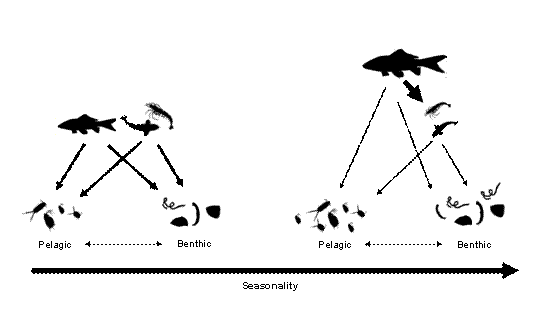
Newsroom
Seasonality of Foodweb Cascading Due to Trophic Niche Shifts
Foraging behavior is strongly modulated by spatio-temporal variations in food availability, and coherence between predators and their prey is common in a variety of ecosystems, because predators must continuously track changing prey patterns and respond to complex heterogeneities in space and time. However, few studies have examined how foraging niche shift of a predator over time cascade down to local prey communities.
The research group led by Dr. XU Jun at Institute of Hydrobiology, Chinese Academy of Sciences (IHB) examined the patterns of temporal foraging niche shifts of a generalist predator, yellow catfish, and the abundance of prey communities in Lake Taihu. They decomposed the trophic niche of yellow catfish into three aspects and found the significant decreases in planktivory and benthivory from late spring to summer and autumn, whereas piscivory increased significantly from mid-summer until late autumn. The temporal dynamics in predator/prey ratios indicate that the predation pressure on zooplankton and zoobenthos decreased when the predation pressure on the prey fish and shrimps was high. Meanwhile the decrease in planktivory and benthivory of yellow catfish enabled primary consumers, such as zooplankton and benthic invertebrates, to develop under low grazing pressure via trophic cascading effects in the local food web.
In complex food webs, trophic interactions are usually expected to reduce the strength and penetrance of trophic cascades. This study demonstrates strong associations between foraging niche of piscivorous fish and abundance of prey. This relationship appeared to be an important factor in producing top-down effects on both benthic and planktonic food webs.
 |
|
Model framework of trophic cascading seasonality (Image by IHB) |